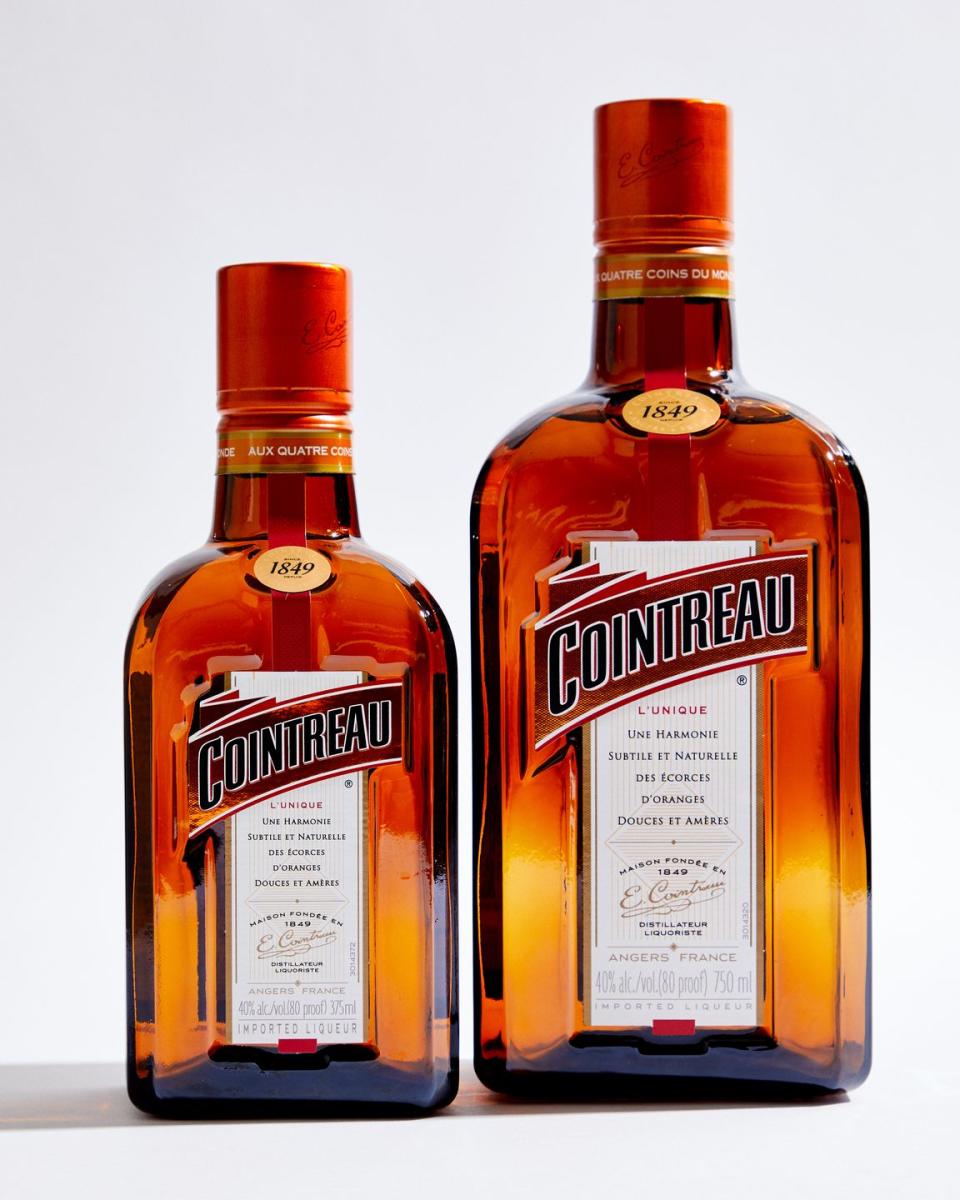The Orange Liqueur Still Asked for By Name

Shop $46, reservebar.com
Welcome to The Esquire Endorsement. Heavily researched. Thoroughly vetted. These picks are the best way to spend your hard-earned cash.
Earlier this year, at the ripe old age of 40, I did something I’d never done before. No, I didn’t stockpile toilet paper or grow a sourdough starter or start meditating—what I did was drink a Cosmopolitan. How had I gone this long without trying such an infamous cocktail? I’d lived in the drink’s epicenter, New York, for the last two decades. I’d been a young twentysomething in New York during the heyday of Sex and the City. I’ve had a career as a beverage writer for the last decade! And, yet, I’d always avoided them. Blame Samantha Jones or the rise of IPAs or the toxic masculinity of youth, but I’d been missing out. Because at age 40, I was blown away by how delicious a perfectly made Cosmo actually is. That zip of lemon-flavored vodka, the sharp acidity of lime juice, the sweet tartness of cranberry, with one crucial ingredient tying them all together: Cointreau.
The legendary orange liqueur is probably not a cocktail ingredient you think about a lot in this era of small batch bourbon and artisan gin and oddball amaros. That needs to change. Produced in France since 1875 according to a secret family recipe, which includes macerating sweet and bitter orange peels in beet alcohol, it was the world’s first triple sec. But while most imitators in the category became interchangeable and completely forgettable, Cointreau remains an absolute must on any serious home bar.
Rarely the star of the show, Cointreau is the ultimate team player—a “glue guy” they’d say in basketball—who elevates everything around it. That’s why it’s at the core of several iconic cocktails, something very few other liqueurs can claim. And, at least for me, it took drinking a Cosmo as I approach middle age for me to realize that.

It is truly irreplaceable.
While many cocktails in the canon simply call for “gin” or “sherry” or “sweet vermouth,” Cointreau is the rare ingredient always asked for by brand name. When the first printed recipe for the Sidecar appeared in 1922, in Paris bartender Harry MacElhone’s ABC of Mixing Cocktails and Robert Vermeire’s Cocktails: How to Mix Them, both men called for Cointreau specifically, while merely asking for one-thirds part of a generic brandy. The same was true with the initial appearance of the ur-Margarita in 1937’s Café Royal Cocktail Book. London barkeep William J. Tarling’s recipe includes fresh lime juice and generic tequila alongside Cointreau in a drink he labeled the Picador. This Daisy-style cocktail would officially be known as the Margarita by the time of a 1953 issue of Esquire. Nearly 70 years later, Esquire’s official Margarita recipe still does not specify a brand of tequila but does insist on Cointreau.
Shop $46, reservebar.com

You could argue it jump-started the modern cocktail revival.
By the late-1980s, American cocktail culture had devolved into luridly named drinks packed with cheap schnapps or, even worse, artificial “mixes.” Enter Toby Cecchini, then bartending at the Odeon, a trendy bistro in lower Manhattan. He’d heard of a drink called the Cosmopolitan making the rounds of gay bars in San Francisco; it featured well vodka with bottled lime juice and sickly sweet grenadine. Liking the name and its light pink color, however, Cecchini decided to make one more upscale, with fresh lime juice, citron vodka, and, yes, Cointreau. That version would become an immediate sensation, getting cocktail drinkers again used to the idea of fresh ingredients and elegant, stemmed glassware. By the end of the 1990s, a new cocktail culture was forming on the coasts, with forgotten drinks from the past being revived and a whole slew of modern classics being imagined, like the Joy Division, which paired dry gin with dry vermouth, absinthe, and, yes, Cointreau. Though often-mocked today, the classic Cosmo was more critical to today’s booming cocktail culture than it ever gets credit for.

Even the ads are cool.
If booze advertising can often be a scourge of capitalism, relentless demands to buy this so you’ll be more that, Cointreau has always taken a more artsy tact. As early as 1898, Cointreau had undergone the unique step of setting up its own in-house advertising studio. Working with celebrated artist Nicolas Tamagno, early print ads featured a mascot known as Pierrot Cointreau, a white-faced pantomime with a frilly collar and pointed hat. These were stunning examples of fin de siècle Post-Impressionism art. Cointreau had elevated the advertising poster to fine art status, and works would soon be displayed in galleries around Paris. Tamagno’s work still evokes the glamor and excitement of the Moulin Rouge, and it’s no wonder original posters from the era sell for thousands of dollars on the auction market. There are hundreds of vintage Cointreau posters for sale on eBay; try to find other brands that can claim that. Even today, Cointreau’s ads continue to drive home the point that Cointreau isn’t just another alcohol brand, but a vital part of the artistry of life and good cheer.
Shop $46, reservebar.com
Photography and prop styling by Allie Holloway
You Might Also Like

